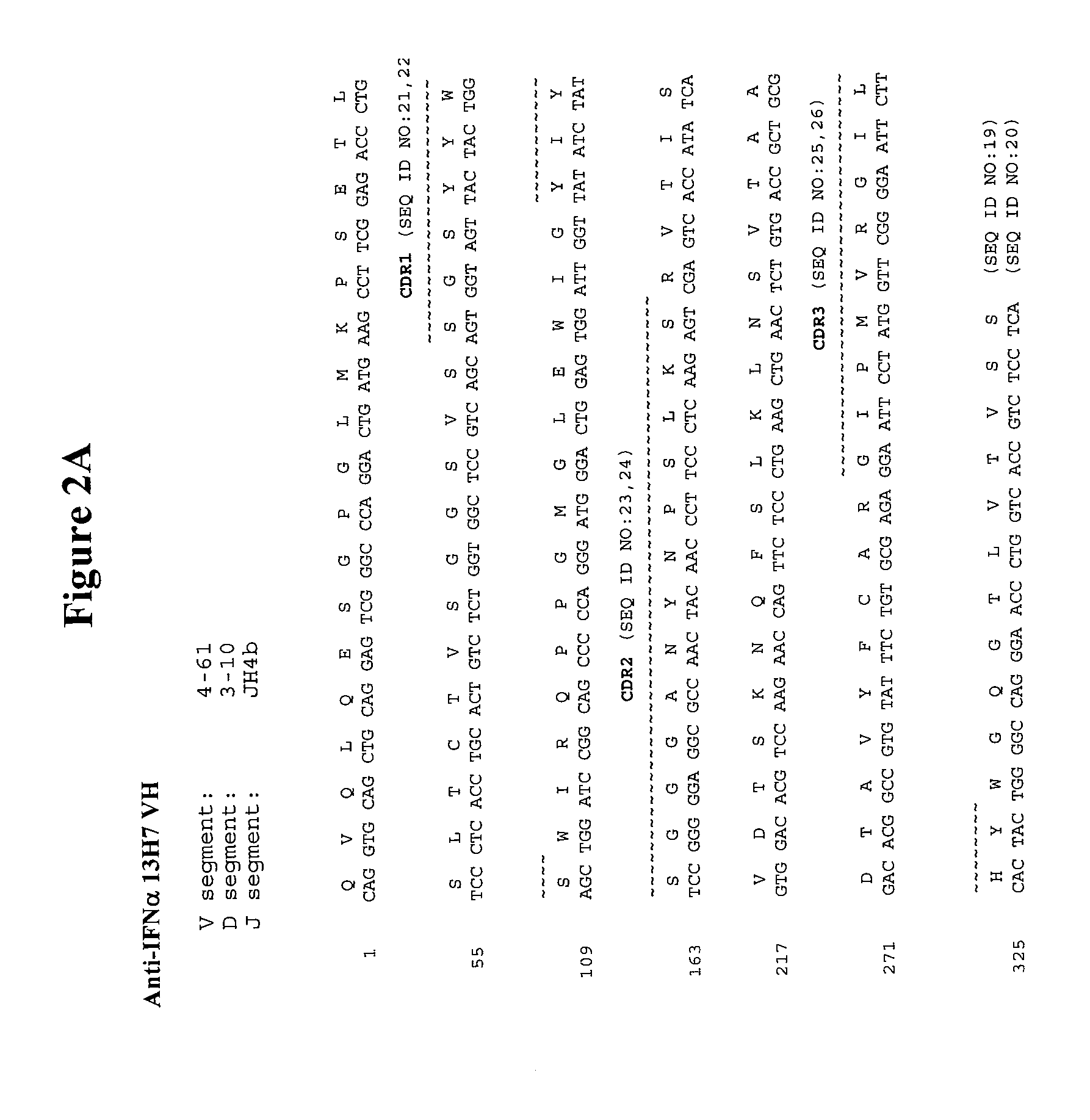Antibodies with decreased deamidation profiles
a technology of antibodies and deamidation profiles, which is applied in the field of protein drug stability, can solve the problems of recurring protein activity reduction, adverse effects on the stability of protein drugs such as antibodies, and degradation of proteins, and achieve the effect of reducing the deamidation profil
- Summary
- Abstract
- Description
- Claims
- Application Information
AI Technical Summary
Benefits of technology
Problems solved by technology
Method used
Image
Examples
specific embodiments
[0214]1. A method of producing an antibody with a decreased deamidation profile, wherein said antibody would otherwise be predisposed to an elevated deamidation profile.[0215]2. The method of embodiment 1, wherein said method comprises the use of mammalian cells.[0216]3. The method of embodiment 1, wherein said mammalian cells are selected from the group consisting of NS0, CHO, MDCK, or HEK cells.[0217]4. The method of embodiment 1, wherein said antibody comprises an asparagine residue preceding and adjacent to a glycine, serine, threonine or an aspartic acid residue, as read N-terminus to C-terminus.[0218]5. The method of embodiment 4, wherein said residues are located in at least one of the VHCDR1, VHCDR2, VHCDR3, VLCDR1, VLCDR2, or VLCDR3 regions of said antibody.[0219]6. The method of embodiment 5, wherein said residues are located in the VHCDR2 of said antibody.[0220]7. The method of any of embodiments 1-6, wherein said antibody deamidation profile is decreased by about 60%, ab...
example 1
Deamidation is Reduced by Altering the Cell Culture Conditions for Production
[0274]Methods: Standard cell culture processes are well documented in the art. Altering certain parameters for growth and viability of the production cell line may yield a higher titre of product. In this example, cell culture conditions such as temperature and pH were adjusted to reduce the deamidation of the desired product. Specifically, the temperature of the cell culture was lowered from the standard 37° C. to 34° C. In addition, the pH of the media the cells were cultured in was lowered from the standard pH 7.2 to 6.9. The deamidation profile of the desired product was analyzed by standard ion-exchange chromatography methods. The percent deamidation was determined by the area under the curve (AUC) method for the elution profile from the ion-exchange chromatography column.
TABLE 1Varying cell culture parameters affects deamidation of the desired product.TemperatureDeamidationCell culture Run #(° C.)pH%1...
example 2
Varying the Timing of Harvest Reduces the Deamidation of the Desired Protein Product
[0276]Standard protein production technologies suggest that harvesting on Day 14 of a cell culture run leads to an optimal recovery of desired protein product. In this example the harvesting time parameter was adjusted to determine the effect on the deamidation state of the desired protein product.
[0277]Methods: In the large scale production of proteins, the harvesting time runs can be varied over the course of the cell culture run. In this working example the harvest date was varied from day 9 day 14, and day 17 post inoculation. Cell culture runs were performed under similar conditions for each trial. The deamidation profile of the desired product was analyzed by standard ion-exchange chromatography methods. The percent deamidation was determined by the area under the curve method for the elution profile from the ion-exchange chromatography column.
TABLE 2Harvest timing alters the deamidation of the...
PUM
 Login to View More
Login to View More Abstract
Description
Claims
Application Information
 Login to View More
Login to View More - R&D
- Intellectual Property
- Life Sciences
- Materials
- Tech Scout
- Unparalleled Data Quality
- Higher Quality Content
- 60% Fewer Hallucinations
Browse by: Latest US Patents, China's latest patents, Technical Efficacy Thesaurus, Application Domain, Technology Topic, Popular Technical Reports.
© 2025 PatSnap. All rights reserved.Legal|Privacy policy|Modern Slavery Act Transparency Statement|Sitemap|About US| Contact US: help@patsnap.com



